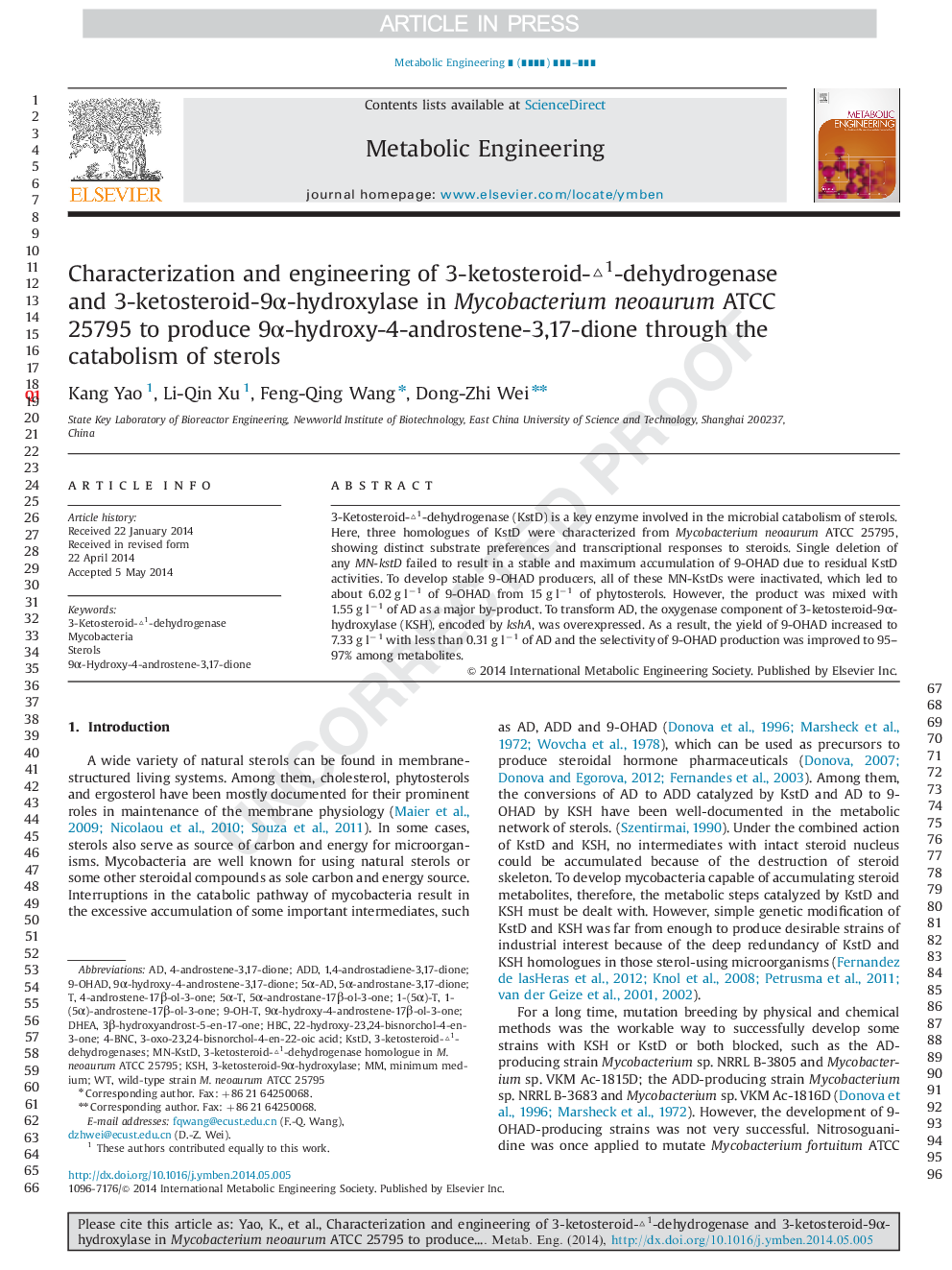| Article ID | Journal | Published Year | Pages | File Type |
|---|---|---|---|---|
| 6494611 | Metabolic Engineering | 2014 | 11 Pages |
Abstract
3-Ketosteroid-â³1-dehydrogenase (KstD) is a key enzyme involved in the microbial catabolism of sterols. Here, three homologues of KstD were characterized from Mycobacterium neoaurum ATCC 25795, showing distinct substrate preferences and transcriptional responses to steroids. Single deletion of any MN-kstD failed to result in a stable and maximum accumulation of 9-OHAD due to residual KstD activities. To develop stable 9-OHAD producers, all of these MN-KstDs were inactivated, which led to about 6.02 g lâ1 of 9-OHAD from 15 g lâ1 of phytosterols. However, the product was mixed with 1.55 g lâ1 of AD as a major by-product. To transform AD, the oxygenase component of 3-ketosteroid-9α-hydroxylase (KSH), encoded by kshA, was overexpressed. As a result, the yield of 9-OHAD increased to 7.33 g lâ1 with less than 0.31 g lâ1 of AD and the selectivity of 9-OHAD production was improved to 95-97% among metabolites.
Keywords
Related Topics
Physical Sciences and Engineering
Chemical Engineering
Bioengineering
Authors
Kang Yao, Li-Qin Xu, Feng-Qing Wang, Dong-Zhi Wei,
